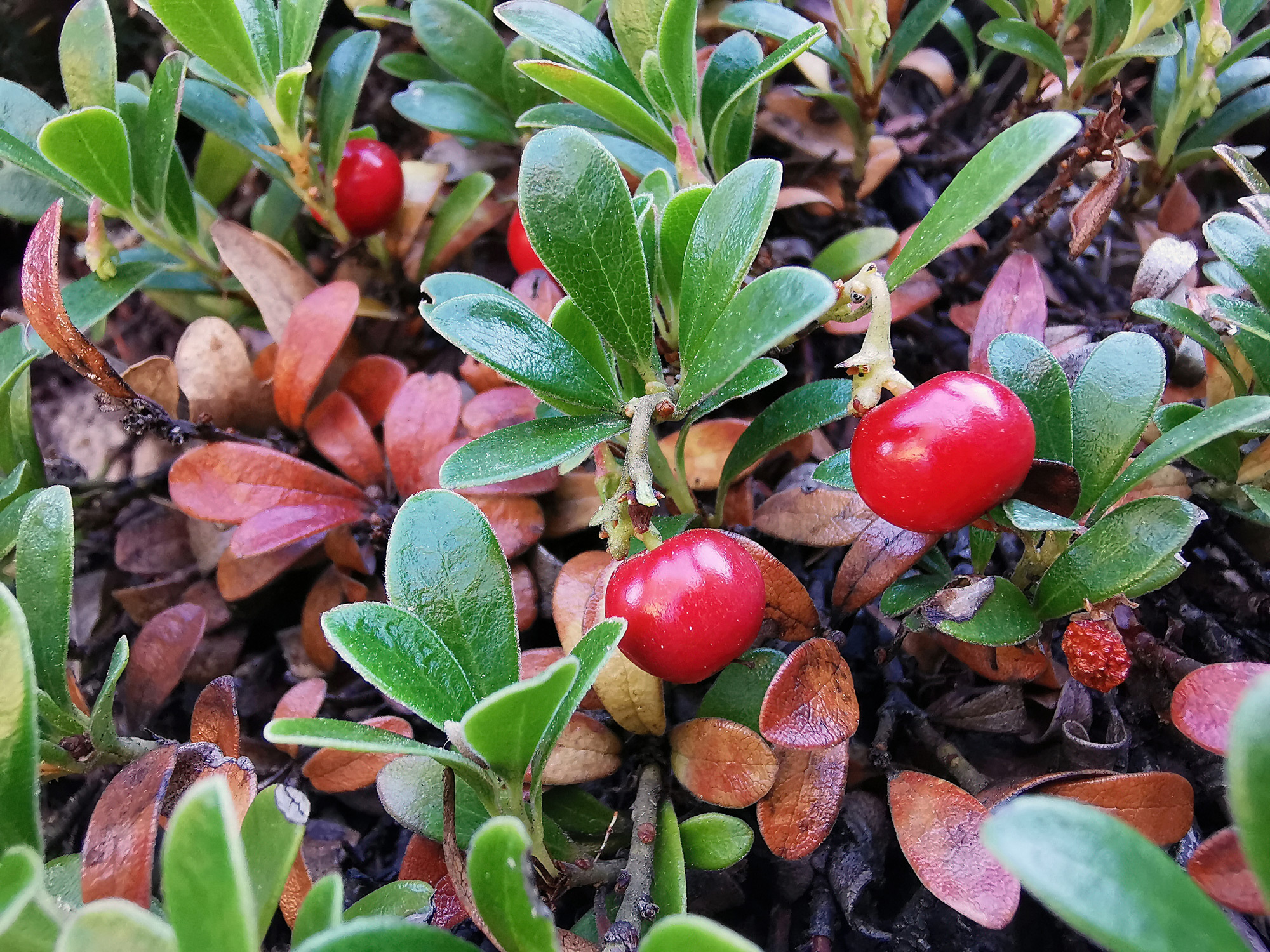Bearberry
Bearberry, with its prostrate growth and bright red berries, is a distinctive plant often found in the Northern Hemisphere's colder climates. Native to Alberta, this evergreen shrub not only graces the landscape with its beauty but also holds cultural, medicinal, and ecological importance in the region.

More on Bearberry
About
Arctostaphylos uva-ursi, or bearberry, is a low-growing, creeping shrub. It thrives in sandy and well-draining soils and is often found in open pine forests, alpine regions, and coastal dunes in Alberta. The plant boasts small, leathery leaves and in spring, it bears delicate, bell-shaped flowers. By late summer and early fall, the shrub is adorned with vibrant red berries, which are a food source for various wildlife, notably bears, hence its common name.
History
For Indigenous communities in Alberta, bearberry has held significance for countless generations. It is known in one Algonquin language as Kinnikinnick, and its leaves were incorporated into a mixture which was smoked. Those leaves, known for their medicinal properties, have also been used in traditional remedies, particularly for urinary tract issues. As European settlers came to Alberta, they were introduced to bearberry's medicinal potential and began to integrate it into their own practices and knowledge bases.
Ways To Cook
While not commonly sought after for modern culinary endeavors due to their inherent astringency, bearberries can be transformed with the right techniques. They can be boiled and sweetened to make syrups or jams. When paired with sweeter fruits, such as blueberries or raspberries, bearberries can add a tart undertone to compotes or fruit pies. Some chefs in Alberta, always on the lookout for local and unique ingredients, have started to experiment with bearberries in sauces to accompany game meats, taking advantage of the berry's tart profile to cut through the richness of the meat. Additionally, they can be dried and later reconstituted in stews or soups. As always, when using bearberries in cooking, moderation is key to ensure their strong flavour doesn't overpower a dish.
